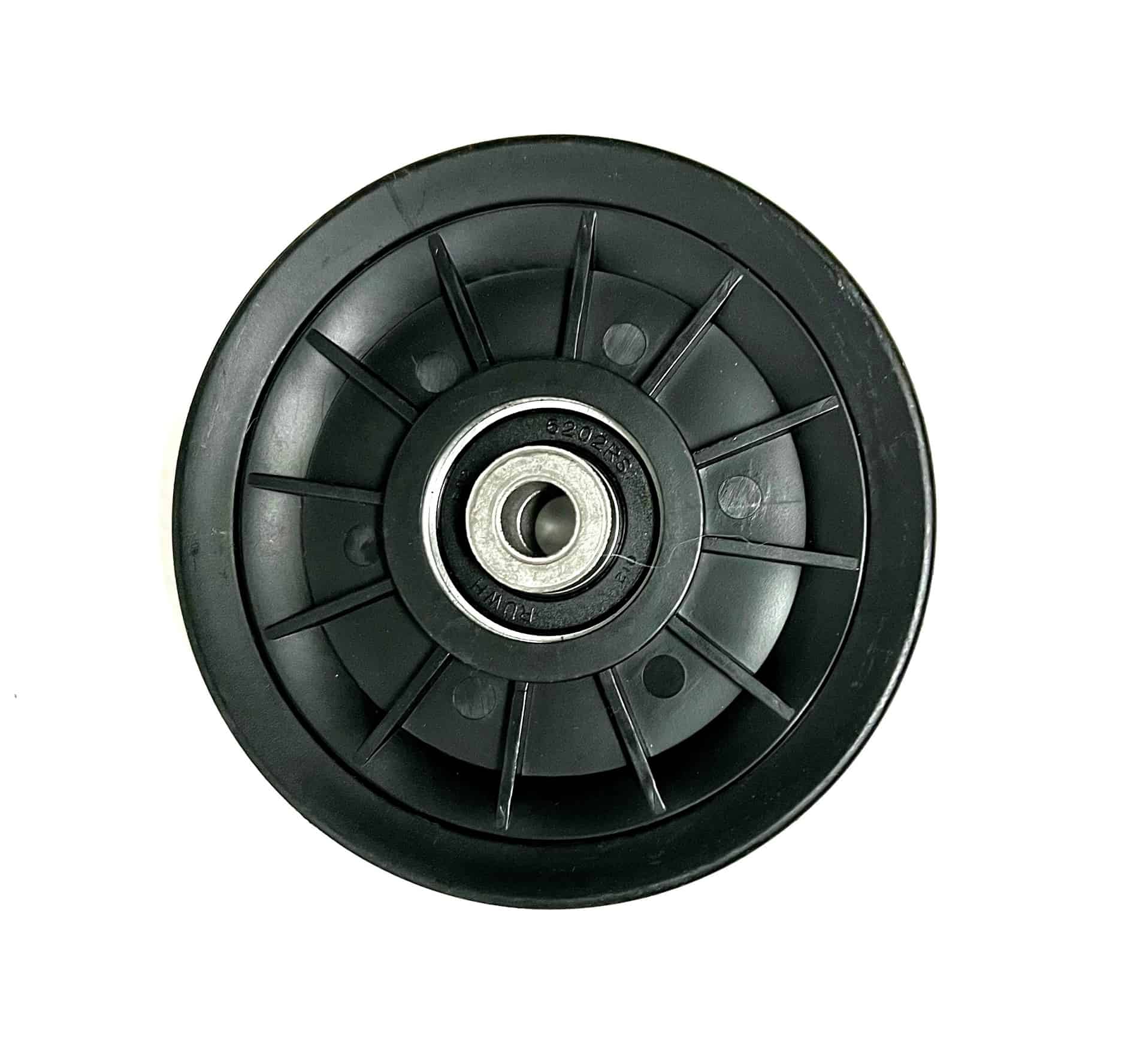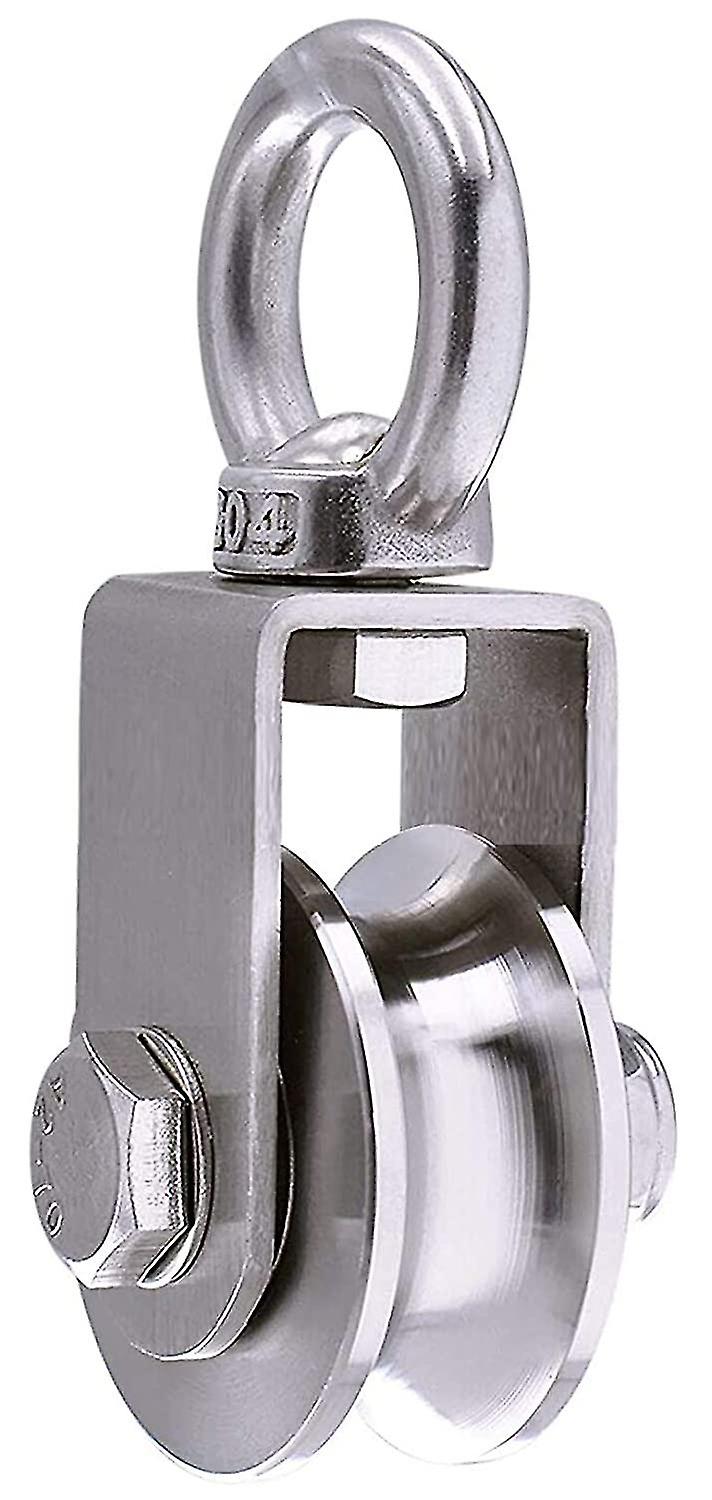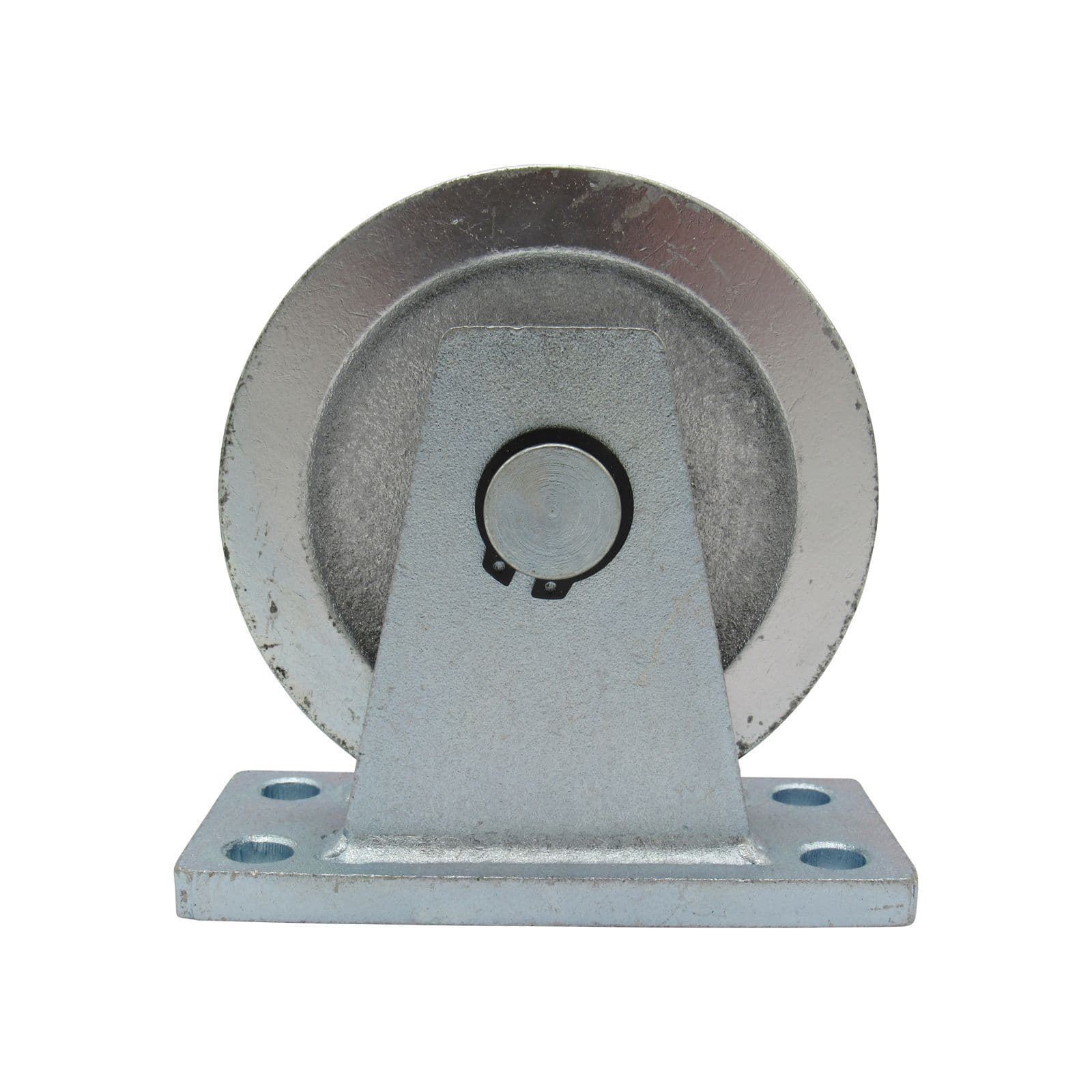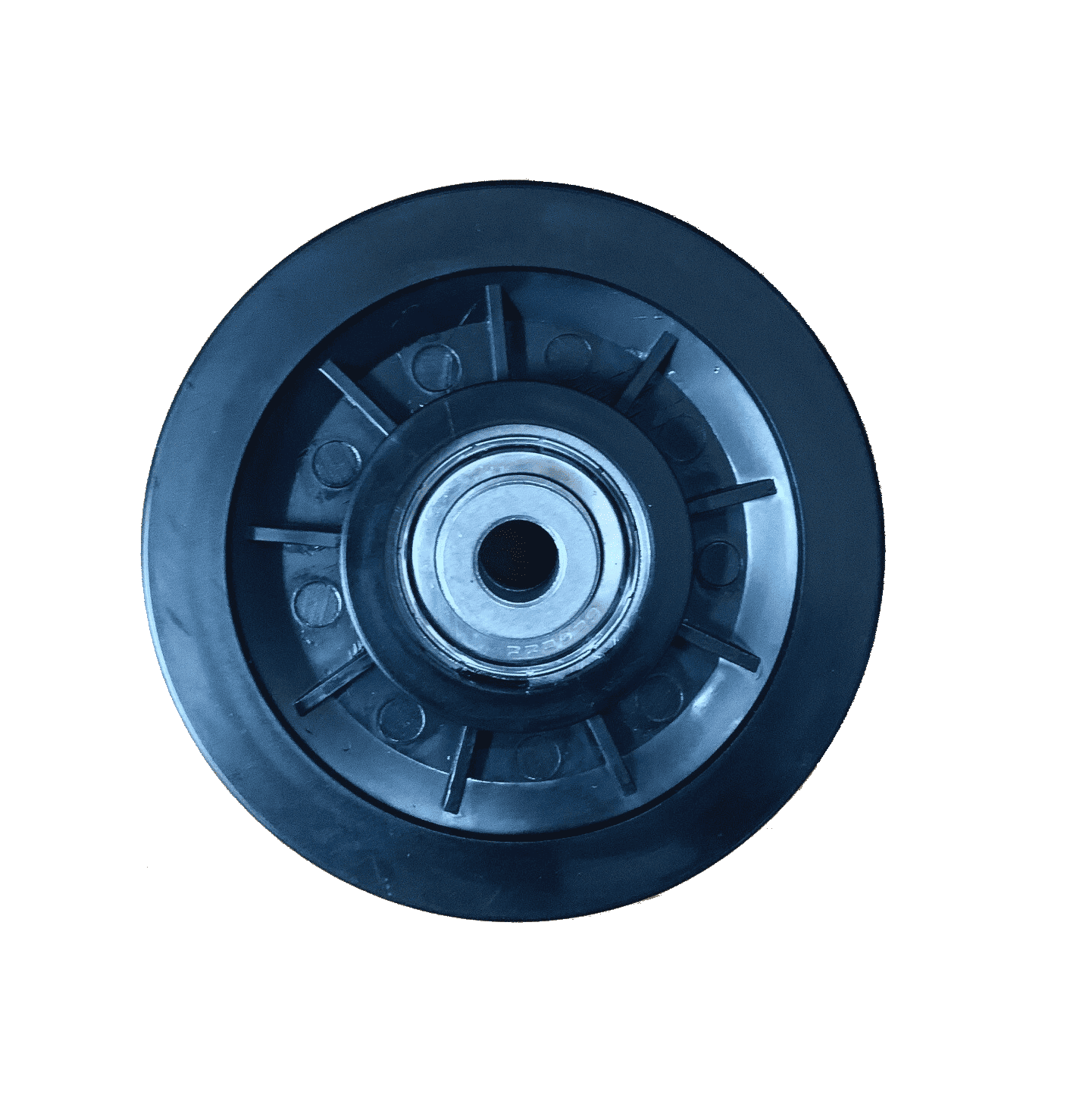Product Description
3 Ton Cable Pulling Pulley Hoisting Lifting Block Wire Rope Pulley Hook Type Lifting Pulley Block and Tackle Pulley
This aluminum alloy and MC nylon open type hoisting tackle with hook possesses light dead weight, which is equipped with the aluminum alloy side panel and the MC nylon sheave. This single Sheave Pulley block is the open type. Our product can be used for lifting heavy objects and other operations in the line construction.
Uses: Applied in line construction for lifting weight.
Features: Adopt aluminum alloy side panel and MC nylon sheave.so it is light in weight.the single sheave hoisting tackle is open style.
Main Specifications
| Item Number | Model | Number of Sheave | Rated Load (kN) | Outer Diameter of Sheave ×Sheave Width (mm) | Rope Diameter (mm) | Weight (kg) | Hoisting Point Type | ||
| 11101 | QHN1-1K | 1 | 10 | Φ100×31 | Φ7.7 | 1.8 | G | H | |
| 11102 | QHN1-2 | 2 | 10 | Φ80×27 | Φ6 | 1.8 | G | H | |
| 11103 | QHN1-3 | 3 | 10 | Φ80×27 | Φ6 | 2.1 | G | H | |
| 11111 | QHN2-1K | 1 | 20 | Φ120×35 | Φ9.3 | 2.2 | G | H | B |
| 11112 | QHN2-2 | 2 | 20 | Φ100×31 | Φ7.7 | 2.6 | G | H | |
| 11113 | QHN2-3 | 3 | 20 | Φ100×31 | Φ7.7 | 3.7 | G | H | |
| 11121 | QHN3-1K | 1 | 30 | Φ150×39 | Φ11 | 3.4 | G | H | B |
| 11122 | QHN3-2 | 2 | 30 | Φ120×35 | Φ9.3 | 4.5 | G | H | |
| 11123 | QHN3-3 | 3 | 30 | Φ100×31 | Φ7.7 | 4.6 | G | H | |
| 11131 | QHN5-1K | 1 | 50 | Φ166×40 | Φ13 | 5.2 | G | H | B |
| 11133 | QHN5-2 | 2 | 50 | Φ150×39 | Φ11 | 5.5 | G | H | |
| 11134 | QHN5-3 | 3 | 50 | Φ120×35 | Φ9.3 | 5.1 | G | H | |
| 11141 | QHN8-1K | 1 | 80 | Φ205×49 | Φ17 | 7.2 | G | H | B |
| 11142 | QHN8-2 | 2 | 80 | Φ166×40 | Φ13 | 8.3 | G | H | |
| 11143 | QHN8-3 | 3 | 80 | Φ150×39 | Φ11 | 7.9 | G | H | |
| 11151 | QHN10-1K | 1 | 100 | Φ246×60 | Φ18.5 | 11.4 | G | B | |
| 11152 | QHN10-2 | 2 | 100 | Φ166×40 | Φ13 | 10.2 | H | ||
| 11153 | QHN10-3 | 3 | 100 | Φ150×39 | Φ11 | 11.7 | H | ||
| 11161 | QHN15-1K | 1 | 150 | Φ280×65 | Φ21.5 | 12.1 | B | ||
| 11162 | QHN15-2 | 2 | 150 | Φ205×49 | Φ17 | 12.8 | H | ||
| 11163 | QHN15-3 | 3 | 150 | Φ166×40 | Φ13 | 11.8 | H | ||
| 11164 | QHN15-4 | 4 | 150 | Φ150×39 | Φ11 | 13.9 | H | ||
To support the Transmission work, CHINAMFG Power has Tubular Gin Pole, Hydraulic cable puller, wire rope pulley block, hoisting tackle, Wire rope gripper , Cable reel spool and stand- all are OEM and professionally produced per ISO 9001:2008, which are being sold to over more than 50 countries in the world. Some items like emergency restoration tower and crossing structure, we can customized, and the safety tools and accessories, are not demanded the MOQ. You can freely help you out either Tech issue or Products requirements. Pls contact us. Thanks.
1. Training and services.
CHINAMFG is a company specializing in the development, design and manufacture of electrical construction equipment and tools. We not only manufacture and sell international standard products, OEM and custom products, but also provide quality tracking and service monitoring.
2. How about the quality of your products?
Our products are manufactured in strict accordance with national and international standards, and each product is tested before delivery. If you would like to view our quality certification and various test reports, please consult us.
3. Why do you choose us?
Because we can provide you with excellent service, quality and reasonable price. In addition, we can also provide smooth delivery of goods, excellent customer solutions.
4. Customer inquiry.
If there is an emergency, customers can also use online contact methods (online Chat, Skype, WhatsApp, ) for faster and better communication. Any enquiry will be answered within 12 working hours.
5. How to obtain samples?
We can provide free samples to the buyer for testing, but the buyer needs to pay the freight. Existing samples take 2-3 days. If there is no stock, we will advise the delivery date.
6. How about packing and shipping?
All goods will be packed in plywood boxes for safe, long haul transport. Support EXW, FOB, CIF, CFR terms.
Required documents such as packing list, commercial invoice, bill of lading, air waybill, CO, Form E, Form F etc will be provided.
Note: If you do not find the product you need, please feel free to contact us. We will provide the best quotation as soon as we verify your requirements.
/* January 22, 2571 19:08:37 */!function(){function s(e,r){var a,o={};try{e&&e.split(",").forEach(function(e,t){e&&(a=e.match(/(.*?):(.*)$/))&&1
| After-sales Service: | 1 Year |
|---|---|
| Warranty: | 1 Year |
| Type: | Hook |
.shipping-cost-tm .tm-status-off{background: none;padding:0;color: #1470cc}
|
Shipping Cost:
Estimated freight per unit. |
about shipping cost and estimated delivery time. |
|---|
| Payment Method: |
|
|---|---|
|
Initial Payment Full Payment |
| Currency: | US$ |
|---|
| Return&refunds: | You can apply for a refund up to 30 days after receipt of the products. |
|---|
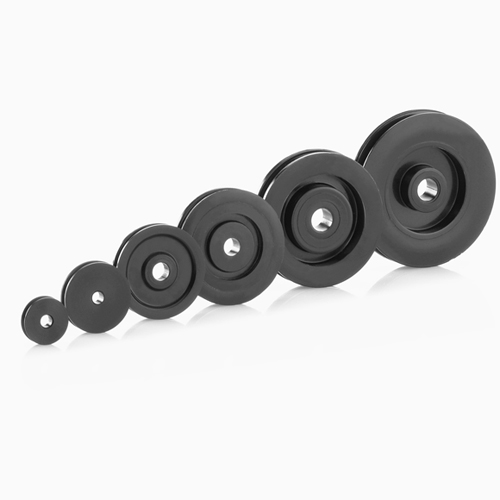
What maintenance procedures are necessary to keep cable pulleys in good condition?
To keep cable pulleys in good condition, several maintenance procedures should be followed. Regular maintenance helps ensure the optimal performance, longevity, and safety of cable pulleys. Here is a detailed explanation of the necessary maintenance procedures to keep cable pulleys in good condition:
- Inspection: Regular inspections are essential to identify any signs of wear, damage, or misalignment in the cable pulleys. Inspect the pulleys for cracks, corrosion, or deformation. Check if the pulley grooves are worn or damaged. Ensure that the pulleys are securely mounted and aligned properly. Detecting and addressing issues during inspections can prevent further damage and ensure the pulleys function correctly.
- Lubrication: Proper lubrication is crucial to ensure smooth operation and reduce friction in cable pulleys. Apply lubricant to the pulley surfaces, bearings, or bushings as recommended by the manufacturer. This helps minimize wear, corrosion, and noise. Use lubricants suitable for the specific pulley materials and environmental conditions. Regularly lubricate the pulleys according to the manufacturer's guidelines.
- Tension Adjustment: Check the tension of the cables connected to the cable pulleys. Improper tension can affect the performance and lifespan of the pulleys. Follow the manufacturer's recommendations for the appropriate cable tension. Adjust the tension as needed, ensuring it is within the specified range. Proper tension distribution is crucial for the overall stability and operation of the system.
- Cleaning: Keep cable pulleys clean to prevent the accumulation of dirt, debris, or contaminants. Regularly remove any buildup from the pulley surfaces and grooves. Use a brush or a cloth to clean the pulleys thoroughly. Ensure that no foreign objects are lodged in the pulley grooves or interfering with the cable movement. Cleaning the pulleys helps maintain their functionality and prevents potential damage.
- Replacement: If any cable pulleys show significant signs of wear, damage, or deformation that cannot be repaired, they should be replaced promptly. Continuing to use faulty or worn-out pulleys can compromise the performance and safety of the system. When replacing pulleys, ensure they are of the correct size, type, and specifications recommended by the manufacturer.
- Professional Servicing: In addition to regular maintenance tasks, it may be necessary to engage professional servicing or maintenance personnel for more comprehensive inspections and repairs. Experienced technicians can assess the overall condition of the cable pulleys and perform specialized maintenance procedures, such as bearing replacement or pulley realignment. Professional servicing can help ensure the pulleys are in optimal condition and operating safely.
By following these maintenance procedures, cable pulleys can be kept in good condition, ensuring their reliable and safe operation. Regular inspections, lubrication, tension adjustment, cleaning, and timely replacement are key to maximizing the lifespan and performance of cable pulleys.
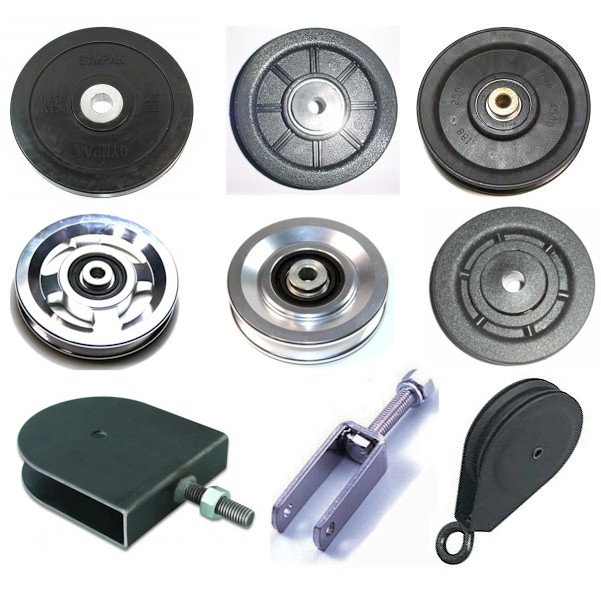
How are cable pulleys utilized in material handling and conveyor systems?
Cable pulleys play a crucial role in material handling and conveyor systems, facilitating the movement, transport, and efficient handling of goods and materials in various industries. They offer several advantages that contribute to the smooth operation and increased productivity of material handling processes. Here is a detailed explanation of how cable pulleys are utilized in material handling and conveyor systems:
- Tensioning and Tracking: Cable pulleys are utilized in material handling and conveyor systems to maintain proper tension and tracking of conveyor belts. They are often positioned at strategic locations along the conveyor line to redirect the belt and ensure it remains aligned and centered. Tensioning pulleys help in maintaining the correct tension in the conveyor belt, preventing slippage, and ensuring smooth and efficient movement of materials.
- Load Support and Weight Distribution: Cable pulleys assist in load support and weight distribution on conveyor systems. They are designed to withstand heavy loads and provide support for the conveyor belt as it carries materials. By distributing the weight evenly, cable pulleys help prevent sagging or excessive strain on the belt, ensuring optimal performance and extending the lifespan of the conveyor system.
- Directional Changes: Cable pulleys are employed in material handling and conveyor systems to facilitate directional changes of the conveyor belt. They are utilized at points where the conveyor line needs to change its path, such as at curves, corners, or diverting stations. By redirecting the belt and guiding it along the desired path, cable pulleys enable the efficient flow of materials and smooth operation of the conveyor system.
- Speed Control: Cable pulleys are used for speed control in conveyor systems. By adjusting the size of the pulleys or changing the pulley arrangement, the rotational speed of the pulley and the conveyor belt can be modified. This allows operators to control the speed at which materials are transported, ensuring optimal throughput, and accommodating different processing requirements or material handling conditions.
- Power Transmission: Cable pulleys play a role in power transmission within conveyor systems. They can be connected to drive motors or other power sources to transmit rotational force to the conveyor belt. This power transmission mechanism enables the movement of the belt and the materials being conveyed, ensuring a continuous flow of goods without manual intervention.
- Conveyor Belt Tension Adjustment: Cable pulleys are utilized for adjusting the tension of the conveyor belt. By incorporating tensioning pulleys in the system, operators can apply the necessary tension to ensure the conveyor belt remains properly tensioned throughout its operation. Proper tensioning is essential for optimal performance, preventing belt slippage, and maintaining consistent material flow.
- Material Sorting and Diverting: Cable pulleys are employed in conveyor systems for material sorting and diverting purposes. They can be integrated into diverters, sorters, or conveyor junctions to redirect materials to different conveyor lines or processing stations based on their specific destination or sorting criteria. Cable pulleys enable efficient material sorting, distribution, and routing within the material handling system.
- Overhead Conveyor Systems: Cable pulleys are commonly used in overhead conveyor systems, where the conveyor belt is suspended from overhead tracks or cables. The pulleys in these systems help support the weight of the belt and the materials being conveyed while allowing smooth movement along the designated path. Overhead conveyor systems are often utilized in industries such as automotive manufacturing, warehousing, and distribution centers.
Overall, cable pulleys are essential components in material handling and conveyor systems. Their utilization in tensioning, tracking, load support, directional changes, speed control, power transmission, tension adjustment, and material sorting contributes to the efficient and seamless movement of goods and materials, enhancing productivity and streamlining material flow in various industrial applications.

How do cable pulleys function in lifting and cable-based systems?
Cable pulleys play a fundamental role in lifting and cable-based systems by providing mechanical advantage and facilitating the transmission of force. These systems utilize cable or rope threaded through pulleys to lift or move heavy loads with reduced effort. Let's explore how cable pulleys function in lifting and cable-based systems:
- Mechanical Advantage: One of the key functions of cable pulleys is to create mechanical advantage. By redirecting the path of the cable or rope, pulleys can change the direction of force applied to the load. When multiple pulleys are used in combination, such as in block and tackle systems, they can increase the lifting capacity and reduce the amount of force required to lift a load. This mechanical advantage allows users to overcome the weight or resistance of the load more easily.
- Force Transmission: Cable pulleys serve as a means of transmitting force from one point to another. When force is applied to the free end of the cable or rope, it travels along the groove of the pulley, causing the pulley to rotate. This rotation transfers the force to the load attached to the other end of the cable, resulting in lifting, pulling, or moving the load. The pulley's design and construction are crucial in ensuring efficient force transmission, minimizing friction and energy losses.
- Directional Control: Cable pulleys enable precise directional control in lifting and cable-based systems. By guiding the cable or rope along the circumference of the pulley, they determine the path of movement for the load. This allows users to lift or lower objects vertically, move loads horizontally, or even change the direction of force at various angles. Cable pulleys help to maintain stability and control throughout the lifting or movement process.
- Load Distribution: In lifting systems that use multiple pulleys, such as block and tackle arrangements, cable pulleys help distribute the load weight. As the cable passes through each pulley, the load is divided among the pulleys, reducing the strain on each individual pulley and the cable itself. Load distribution is particularly beneficial in lifting heavy loads, as it minimizes excessive stress on any single component and ensures a more balanced and secure lifting operation.
- Smooth and Controlled Movement: Cable pulleys contribute to smooth and controlled movement in lifting and cable-based systems. They are designed to minimize friction and provide low-resistance guiding surfaces for the cable or rope. This allows for smooth movement of the cable, preventing snags, jerks, or sudden stops that could compromise the safety or stability of the lifting operation. Smooth and controlled movement is essential for precise positioning, accurate load handling, and safe operation of lifting systems.
Overall, cable pulleys function as integral components in lifting and cable-based systems. They create mechanical advantage, transmit force, provide directional control, distribute load weight, and facilitate smooth and controlled movement. By harnessing the mechanical properties of cable pulleys, these systems enable efficient lifting and movement of heavy loads, making them essential in a wide range of industries, including construction, material handling, rigging, and many others.


editor by CX
2024-04-15
